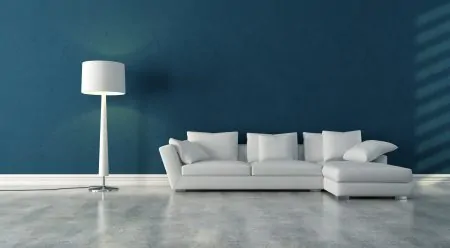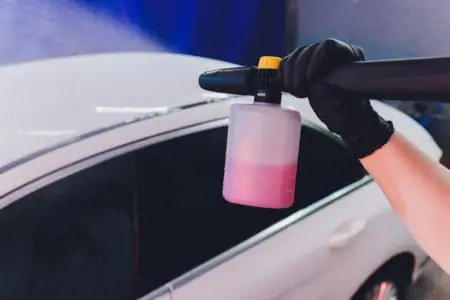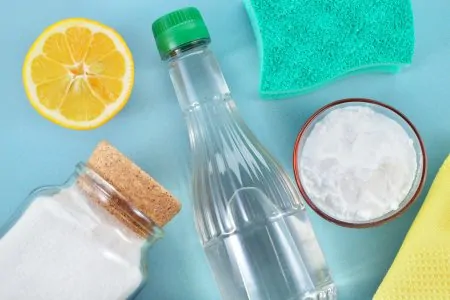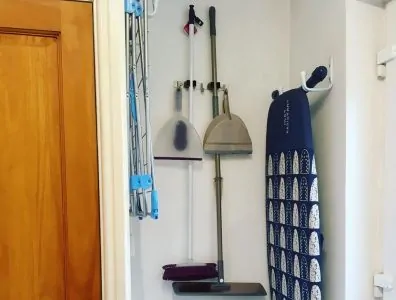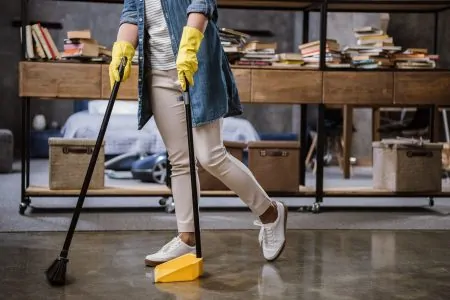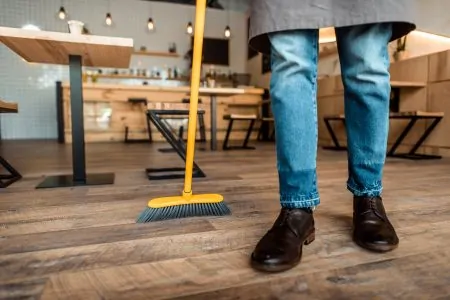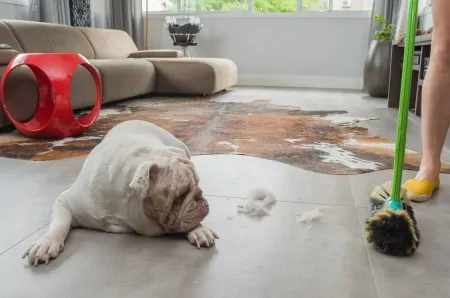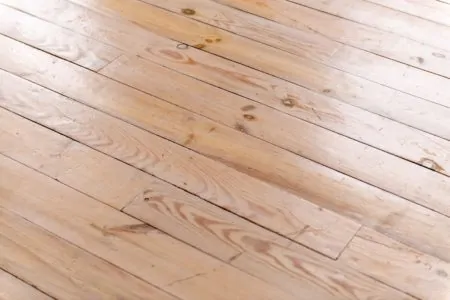You might think that concrete is a robust material that you can neglect cleaning. But the truth is, concrete is a porous material that you need to clean regularly.
Dust and grime love to live on and in concrete. Plus, the concrete quickly absorbs various substances. While this is a popular flooring choice for property owners, you must know how to clean concrete floors.
We’ll walk you through the best cleaning methods for sealed, unsealed, painted, and even more types of concrete. These methods will provide that squeaky clean feeling that you’re after.
Key Takeaways
- Determine your concrete floor type (unsealed, sealed, painted, stained, stamped, or polished) before cleaning.
- For unsealed concrete, use a washing soda solution, and for sealed or polished floors, use a pH-neutral detergent or dish soap.
- Avoid using vinegar on unsealed concrete floors, as it can cause etching.
- Regularly sweep or vacuum all concrete floors to remove dirt and dust, and reseal or repolish when necessary (every 5-10 years).
- What Kind of Concrete Floor Do You Have?
- Identifying the Floor
- Cleaning Concrete Floors
- Cleaning Unsealed Concrete Floors Inside the Home
- How to Clean Unsealed Concrete Floors Outdoors
- Cleaning Non-Decorated Sealed and Polished Floors
- How to Clean Painted or Stained Concrete Floors
- FAQs
- A Clean Home Set in Stone
What Kind of Concrete Floor Do You Have?
Before you start cleaning, you should work out what type of concrete floor you have.
Unsealed
Unsealed concrete is simply poured and set. We see it as the raw form of concrete flooring without any additives. Due to its absorbent nature, it is vulnerable to cracks, build-up, and hardening of dirt and stains.
Sealed
The most common — especially indoors — can be the overall type for those listed below. It protects the floor against damage, stains, and moisture. Cleaning is always more effective on a floor that is sealed.
You can seal concrete using one of the following sealants: acrylic, urethane, epoxy, and silicate. Each one has unique properties and applications (1).
Painted
Concrete’s permeability can be taken advantage of to create a bold and opaque effect for endless flooring design possibilities. Paint can make even the dullest of slabs look like tiles or timber.
With that said, unless it is sealed, the paint can become dulled, particularly from cleaning.
Stained/Metallic
This technique alters the color and appearance of the floor as the stain permeates the material, transforming it with a translucent, deep, and mottled detail. It can be left unsealed, making it vulnerable to wear and tear.
Stamped
Concrete can resemble brick, tile, wood, or stone. This is achieved by imprinting a pattern into wet concrete. Due to the valleys created by the print on outdoor concrete stamped floors, however, you may require some high-pressure water to achieve a pristine clean. We recommend doing this every six months or so.
Polished
Polishing consists of grinding the concrete to a smooth and scratch-free finish that will not chip or dent. This intensive process hardens the unprotected nature of the concrete, limiting staining and dust build-up and providing easy maintenance — a blessing!
Polished concrete does not always have a seal. However, it is common to have an applicant or wax solution on the surface for extra protection or some grip.
Identifying the Floor
Regardless of your floor type, there are some factors to consider when choosing your cleaning method. Whether painted, stamped, or stained, you first need to be able to distinguish if your floors are sealed or not.
Luckily, if you don’t already know what your floor is, the process of distinguishing is easy. Simply drop a small amount (around a tablespoon or two) of water on the floor surface.
Then wait for 20 minutes. If you notice the water is still beaded, it’s safe to assume there’s a sealant present. But if the puddle has seeped into the floor, and consequently the concrete has darkened, it’s unsealed.
Cleaning Concrete Floors
Below we will give you the first step for cleaning all concrete floors. Then you can pick the right cleaning solution for your floor type in the subheadings to follow.
There are typically four types of cleaning solutions (not including those created for specific purposes):
- Acidic: Effective for removing stains, dirt, and rust on exterior floors. Take caution when using these liquids.
- pH neutral: Mild, mostly used on interior or lightly soiled decorative concrete flooring.
- Alkaline: Essentially a degreaser for concrete floors. Used on interior or exterior and often used as a neutralizer after harsh acidic cleans.
- Enzymatic/bacterial: Breaks down plant stains, animal droppings, and soil matter.
It may be best to contact a professional if you are unsure what concrete cleaner to use, but we will mention our selection below.
For all concrete floors, we need to periodically clear any waste, dirt, or dust with a good old-fashioned sweep or vacuum. A modern vacuum with a hard floor setting can be a more time-efficient way to remove excess debris.
Take Note
Cleaning Unsealed Concrete Floors Inside the Home
As we mentioned, unsealed concrete is exceptionally porous, and you may find more stains. To maintain your floors, pay attention to problem spots as soon as they occur. It may be possible to fade existing spots, but if a stain has penetrated the concrete, you might not be able to eradicate it entirely.
- Make solution and clean: Following the surface sweep, dissolve three tablespoons of washing soda in one gallon of warm water in a bucket. Soak the mop, wring it out and start on one side of the room, making your way around the area methodically.
- Fresh water: Refill the bucket with warm, clean water.
- Mop again: Again, mop your way around the room, starting on the same part of the floor as the step before. Rinse the mop every 3-square feet, wring out the water, and continue.
- Dry: If the mopped area is enclosed, create a breeze with an electric fan or open the windows for natural airflow to dry.
Tips and Tricks
- Grease spots: Sprinkle kitty litter, sawdust, or cornstarch over the grease and leave to absorb for 24 hours. Then remove by sweeping or vacuuming.
- Dry stains: Slightly moisten the area and add a few drops of detergent. Stand for 45 minutes to soak and lift the stain. Pour boiling water over and scrub with a medium bristled brush. Then mop the area with clean water to remove suds.
- Do: Inspect the floor and clean any marks weekly.
- Don’t: Clean with vinegar (acid), as it can eat away at your concrete floor. You cannot use the acidic property of vinegar in cleaning unsealed concrete floors which would result in unwanted patterns referred to as etching.
How to Clean Unsealed Concrete Floors Outdoors
Apply this method to unsealed garage floors and exterior stamped concrete.
Exterior concrete requires more effort as it’s exposed to outside conditions. Everything from weather conditions, plant matter stains, car oil, grease, and tire marks. We advise doing a thorough clean monthly.
Once a year, or if your floors are filthy, the best option is to rent a hot water pressure washer (3000 PSI or 4 GPM rating) for a detailed clean.
Depending on your stains, you may want to use an acidic or enzymatic cleaner first with a scrubbing brush. It is always best to use an alkaline cleaner to follow up. This neutralizes the acid’s effect on the concrete and protects it from degradation.
- Make solution: Mix the solution in a bucket. For a general clean, you can use trisodium phosphate as an alkalizer. Use a quarter cup for every gallon of water. For a stronger solution, use up to half a cup for every gallon.
- Clean floor: Hose the floor to dampen it and carefully spread the solution over the floor. Using your hard-bristled broom with pressure, start scrubbing the surface and aggravating the suds into the surface.
- Clean the edges: If using a pressure washer, fill the machine and start at the edges closest to the building. Using sweeping strokes, push the liquid toward the grass or out of the garage door. Pay attention to any crevices, cracks, or hardened dirt.
- Rinse: For both methods, follow up with a garden hose to rinse off the solution. If the cleaning wasn’t sufficient, repeat the steps one more time. You can use a soft edge scraper to clean any water pools for a quicker and even dry.
Tips and Tricks
- Tire marks: Wet the area and use a degreaser (alkaline) concentration on the stain. Scrub up the suds and let them stand for four to six hours. Rinse off and continue with a full floor clean.
- Rust stains: Wet the area and pour or spray either lemon juice or vinegar on the rusted spots. Leave for 20 minutes before scrubbing in circular motions with a stiff-bristled brush. Rinse off with fresh water and follow up with the method above.
- Do: Cover the walls or surrounding materials of the concrete when using harsh chemicals to protect them from splashes and potentially damaging the surfaces.
- Don’t: Use metal or wire brushes on concrete floors. The metal pieces can wedge themselves into the concrete and result in rust spots.
Hazard
Cleaning Non-Decorated Sealed and Polished Floors
The following steps are straightforward since the floor is protected against most of those annoying stains and marks. Included are some tips on approaching any sticky marks you may find.
- Remove dust: Continue the clean by taking a slightly damp dust mop or rag over the surface. This will pick up the last remnants of dust. There is nothing more counterproductive than mopping the floors to find you have helped create little spots of mud.
- Make cleaning solution: Proceed to fill a bucket with warm water and a bit of pH-neutral detergent or dish soap. Alternatively, you can go for the natural use of Castile liquid soap. We also love using one part vinegar to eight parts water.
- Mop: Begin to mop in one corner of the room. Methodically approach a 3-square foot at a time before you dunk the mop back in the bucket. Then wring it out and move along to the next square.
- Clean water: Refill the bucket with clean, warm water.
- Rinse floors: Again, methodically start at the same corner and work your way across the same path. Remember to rinse and dunk the mop to clean up any soap residue.
- Dry floors: Open the windows, letting that fresh breeze dry the floors. Alternatively, you can set up a fan to blow across the room.
Tips and Tricks
- Sticky marks: Mix equal parts coconut oil and baking soda. Apply the solution and buff the area. Wait 10 minutes before rubbing the spot off with a paper towel or cleaning rag to remove the problem. If the mark persists, apply again and follow up with a soft-bristled brush.
- Stains: Combine three parts cornstarch with one part hydrogen peroxide to create a paste-like texture. Spread the solution over the stain, leaving it to stand overnight. Scrape off the dried paste, rinse with water, and continue your cleaning.
- Do: Reseal/repolish your concrete floor every five to 10 years (2).
- Don’t: Add too much cleaning solution to your bucket; this can leave white streaks.
How to Clean Painted or Stained Concrete Floors
This method is similar to the non-decorated floors. The exception is that you need to be selective with which cleaning solutions or chemicals you use. Combining a particular substance with the paint can cause a reaction — leading to bubbling or peeling — even with a sealant.
- Remove dust and debris: After your surface debris clean, continue with a dry dust mop to catch all excess dust and ensure a full clean. Take an extra moment to work on those corners and edges.
- Make solution: Fill a bucket with a gallon of warm water and add a small amount of mild dish soap.
- Wring out cloth: Using a microfiber mop, soak it in the solution and wring it out thoroughly until it is just damp. You do not want to spread too much water on the floor.
- Mop: Mop the floor in small sections, beginning in one corner and working your way across the space.
- Rinse floor: Then rinse your mop and bucket and repeat with clean water. This will remove any dry suds that can create stains or dust spots.
- Dry: Dry the fresh and clean floor with a towel — which doubles as a floor shine.
Tips and Tricks
- Do: Wipe up any liquid spills or food marks immediately using only a damp cloth. If the spot leaves a mark, apply a small drop of mild detergent with water and lightly scrub. Follow up with a clean water wipe.
- Don’t: Use ammonia, bleach, vinegar, or any products with these ingredients as they can penetrate the paint and polish and damage them.
FAQs
A Clean Home Set in Stone
Concrete is becoming a popular choice for floors, as it is stronger and more affordable than other options. There are many specialized tools and cleaning solutions to tackle each type of floor.
Spots and stains do not have to be a problem if you clean them regularly. Keep on top of your cleaning, and you can maintain the exceptional appearance that concrete can add to your home.
